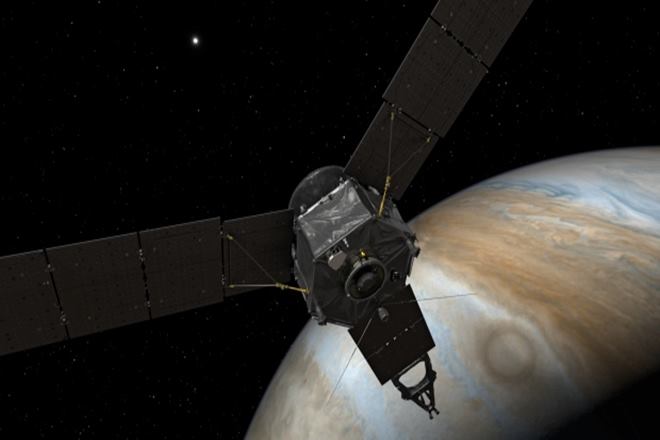NASA’s solar-powered Juno spacecraft has successfully executed its first flyby of Jupiter, passing just 4,200 kilometres above the gas giant’s swirling clouds – the closest contact ever achieved by a man-made probe with the king of planets.
The flyby on August 27 was the first time Juno had its entire suite of science instruments activated and looking at the giant planet as the spacecraft zoomed past, NASA said.
During the closest approach with the gas-giant world, Juno passed about 4,200 kilometres above Jupiter’s clouds, travelling at 208,000 kilometres per hour with respect to the planet. This flyby was the closest Juno will get to Jupiter during its prime mission.
“Early post-flyby telemetry indicates that everything worked as planned and Juno is firing on all cylinders,” said Rick Nybakken, Juno project manager at NASA’s Jet Propulsion Laboratory in the US.
There are 35 more close flybys of Jupiter planned during Juno’s mission scheduled to end in February 2018.
“We are getting some intriguing early data returns as we speak,” said Scott Bolton, principal investigator of Juno from the Southwest Research Institute in San Antonio.
“It will take days for all the science data collected during the flyby to be downlinked and even more to begin to comprehend what Juno and Jupiter are trying to tell us,” said Bolton.
While results from the spacecraft’s suite of instruments will be released down the road, a handful of images from Juno’s visible light imager – JunoCam – are expected to be released the next couple of weeks.
Those images will include the highest-resolution views of the Jovian atmosphere and the first glimpse of Jupiter’s north and south poles.
“We are in an orbit nobody has ever been in before, and these images give us a whole new perspective on this gas-giant world,” said Bolton.
The Juno spacecraft launched on August 5, 2011, from Florida, and arrived at Jupiter on July 4 this year.
PTI

